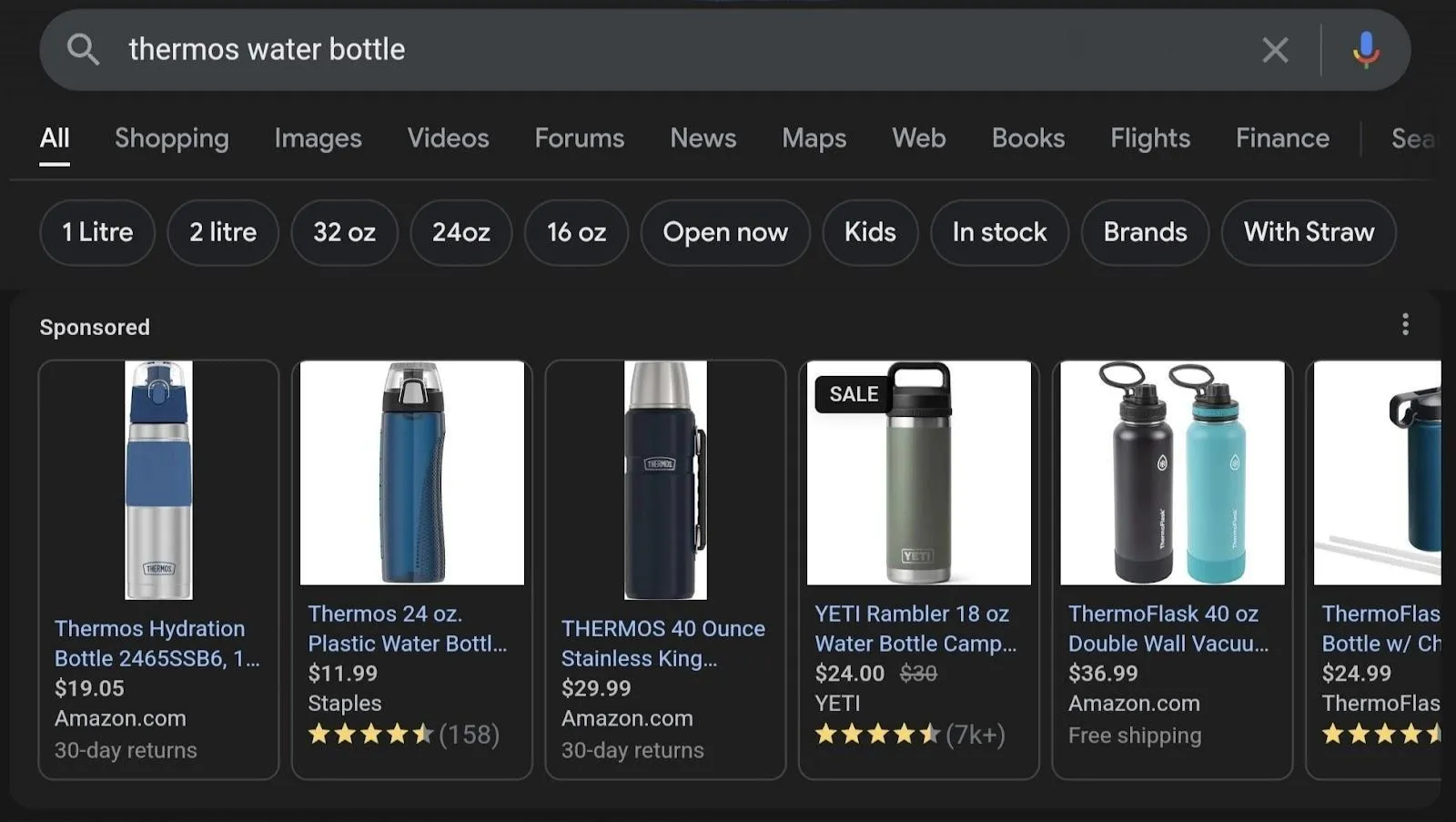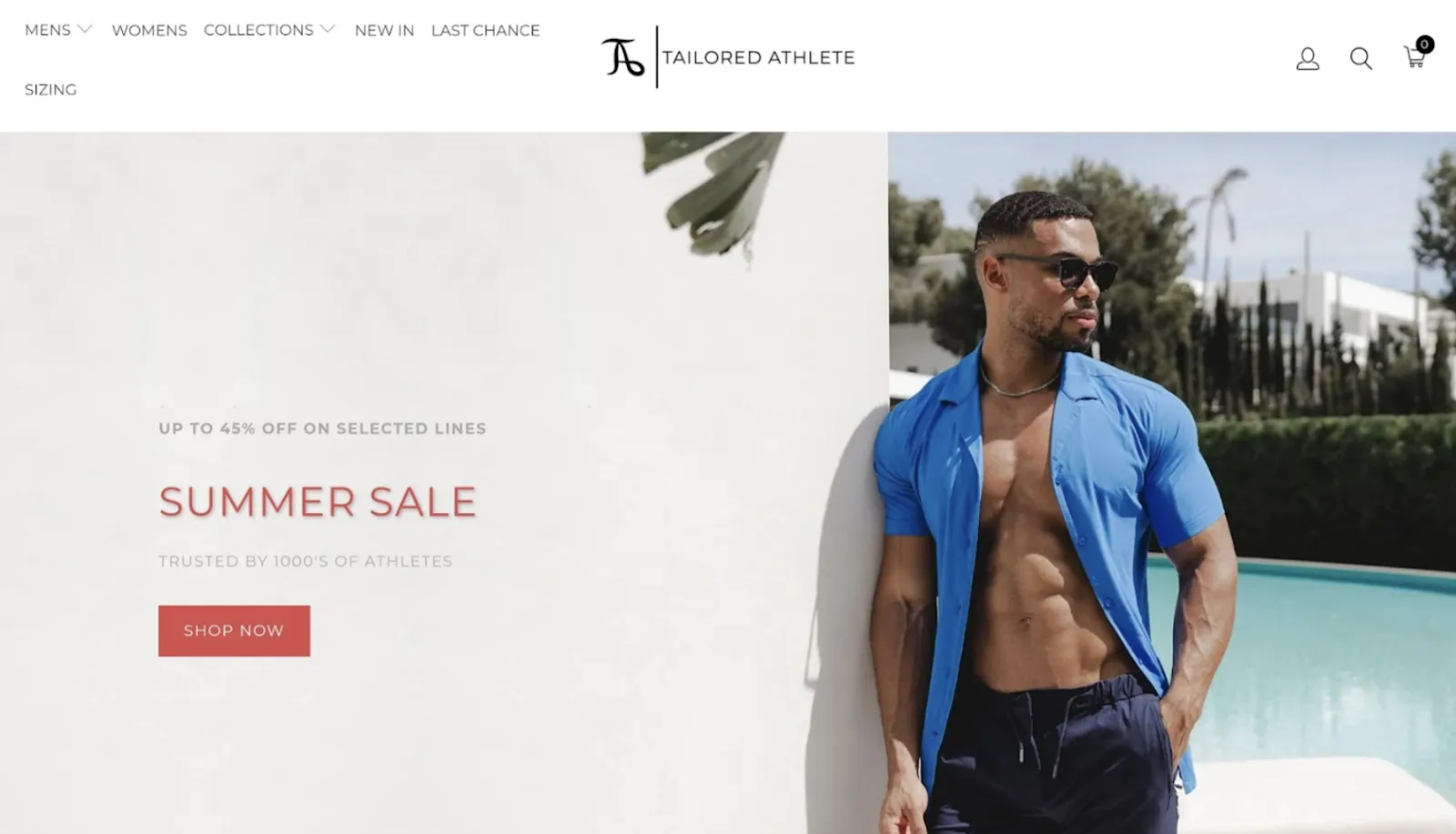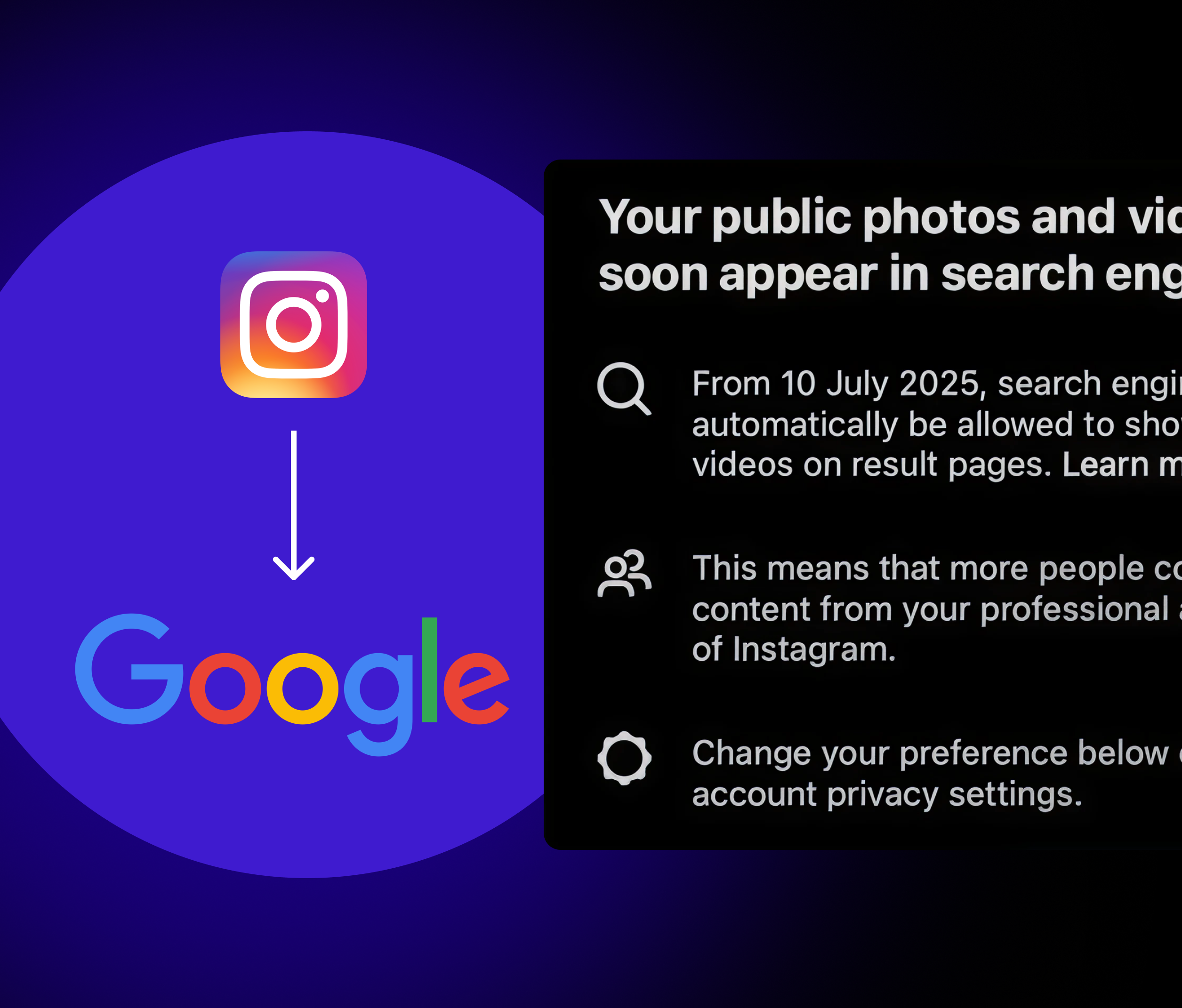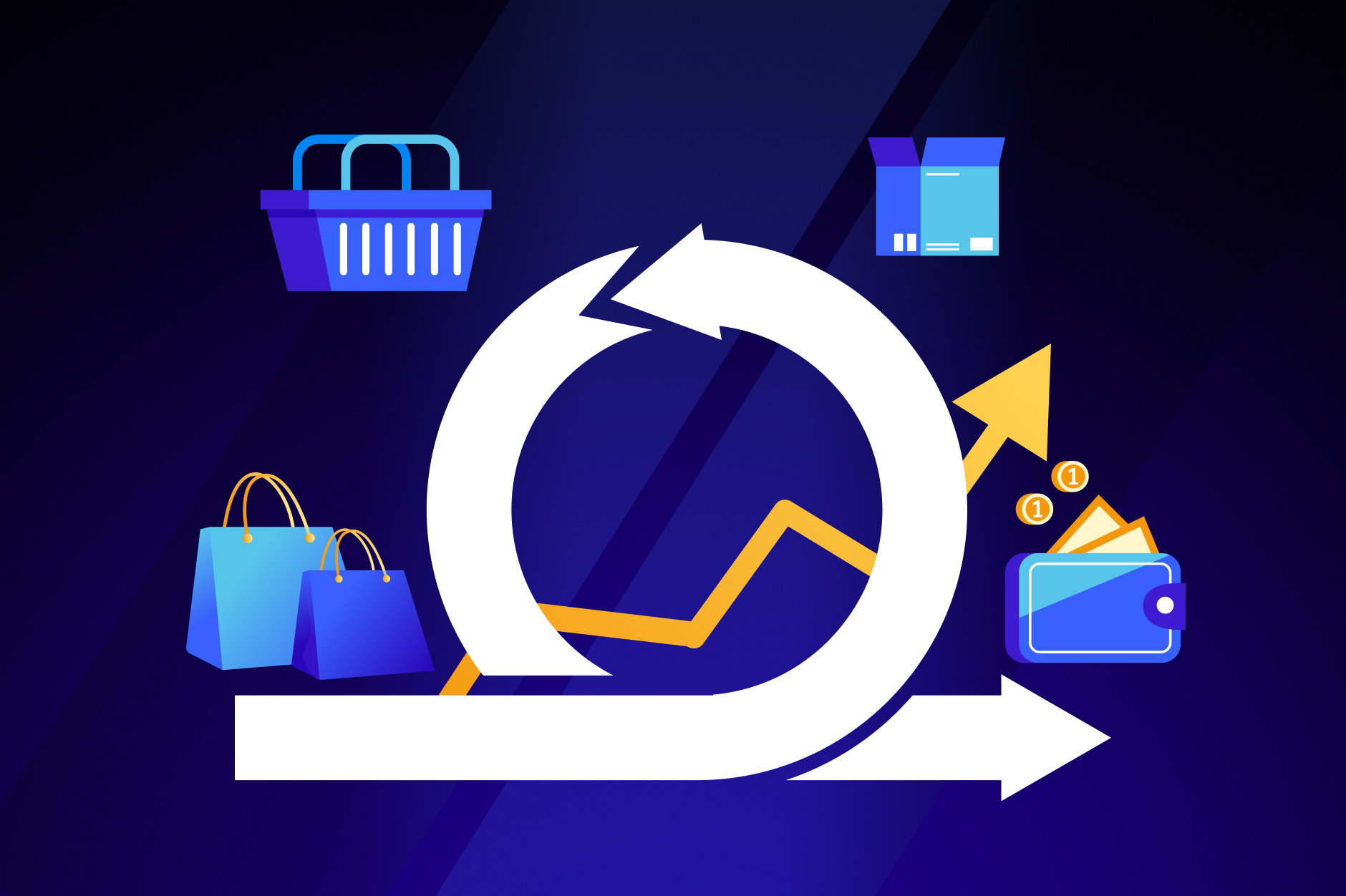You're doing everything right—targeting the right audience, running ad campaigns, and offering discounts. But your acquisition costs are still too high, and conversions aren’t improving. What’s missing?
A successful customer acquisition strategy isn’t just about bringing people to your website. It’s about guiding them through the buying process efficiently. If your funnel has weak points—confusing messaging, slow checkout, or missing trust signals—you’re missing out on converting new customers faster and spending more.
This guide will break down the stages of the customer acquisition journey, how to optimize it to improve conversions, and acquisition strategies to drive growth.
What is the customer acquisition journey?
The customer acquisition journey refers to the steps that a potential customer or your new lead goes through before making a purchase decision.
It outlines their progression from brand discovery to becoming a paying customer.
For example, a potential customer looking for a thermos water bottle could first discover an ecommerce brand through Google ads search results.

Next, they might browse different product pages to shortlist the ones that they like the most.

In an ideal world, a customer would convert right after landing on the product page for the first time.
However, most customers don’t buy immediately. They might leave the site, get distracted, or hesitate due to factors like pricing or shipping costs. At this stage, retargeting strategies such as ads or emails with discount codes can help close the sale.
Each stage of the customer acquisition journey presents an opportunity to increase brand awareness, build a rapport with new audiences, reduce drop-offs, and increase conversions.
What are the different stages of the customer acquisition journey?
A customer acquisition journey can take anywhere from a few hours to months to complete. To speed up the customer acquisition process, you need to be aware of how customers journey from awareness to acquisition. The acquisition journey has three major stages:

1. Awareness stage
Brand awareness is where it all begins—it sparks an initial interest in your product. There are many ways that a potential customer could become aware of your brand and its products:
- One of your ads popped up on their social media feed for the first time.
- They searched for a product relevant to your brand on Google and found your website.
- They saw a post about your products by a content creator or influencer they follow.
At the awareness stage, they're just learning that your brand exists. Your goal at this point is to pique their curiosity and have strong messaging that provides proof that your brand is the solution they’re looking for.
2. Consideration stage
On average, it takes at least seven meaningful interactions with a potential customer before they are ready to convert. These interactions, or touchpoints, can be any medium— email, social media, advertisements, or even a recommendation from a friend.
The core idea is that repeated exposure to a brand builds familiarity, trust, and confidence—factors that unconsciously influence purchasing decisions.
In the consideration stage, this exposure is crucial to warm your leads and nudge them towards conversion. With social media and retargeting, it’s easier than ever to do this!
3. Conversion stage
In the conversion stage, your lead is ready to become a paying customer. At this stage, your prospective customer actively evaluates your product against competitors, explores your website and the product they are interested in, and ideally, places an order.
Oftentimes, many shoppers land on the website and add a product to their cart, but end up dropping off without buying. This takes them back to the consideration stage, requiring you to retarget them back to convert.
Customer acquisition strategies to capture new customers
While it's important to focus your marketing efforts on driving potential customers at different stages of the funnel toward conversion, it's equally important to do so affordably.
Let's look at a few different strategies (and their best practices) to improve your customer acquisition.
Strategy #1: Paid ads
When it comes to social media advertising, success is all about smart targeting and compelling content. To do that, you need to learn and understand your target audience.
- Who are they? This includes demographics like age, gender, location, etc.
- What do they want? What problems do they want to solve like your brand can help with?
- What platforms do they frequent? What’s their browsing behavior?
Since Meta and Google ads are highly competitive, you need to optimize your ad budget with the right targeting. Here’s how to get the most out of your campaigns:
- Prioritize creative testing: Test multiple hooks, ad formats, and messaging to identify what converts best.
- Launch lead generation campaigns: Capture emails and phone numbers for cheaper retargeting via SMS and email.
- Set up retargeting ads: Re-engage visitors who clicked through to your Shopify store but didn’t convert.
- Test responsive search ads: Experiment with different messaging to identify what resonates.
- Optimize assets using Performance Max: Make sure all creative elements are rated “Good” or “Best” for better ad delivery.
- Refine search terms: Regularly update negative and high-performing keywords to improve relevance and reduce wasted spend.
For example, Duradry, a deodorant brand, uses Google ads to highlight some of its best-selling products. The brand uses its product benefits as keywords and highlights user ratings to build credibility.

Strategy #2: Affiliate marketing
Affiliate marketing strategy turns your customers and influencer partners into revenue drivers. For every sale they bring in, they earn a commission. Unlike paid ads, where costs fluctuate, you only pay for actual conversions.
Here’s how to make it work:
- Set clear incentives: Offer tiered commissions and provide bonuses for high-performing affiliates.
- Make sign-ups effortless: Use a simple onboarding process with auto-generated affiliate links.
- Provide marketing assets: Give affiliates ready-to-use creatives, product images, and messaging.
- Track performance: Use analytics to monitor affiliate sales and optimize payouts.
Setting up an affiliate program doesn’t have to be complicated. Tools like Social Snowball automate the entire process—from generating unique codes for new customers to integrating with platforms like Klaviyo and Postscript for seamless communication.
For example, Tailored Athlete, a fitness apparel brand, switched to affiliate marketing after noticing that paid ads were breaking their budget. Their affiliate marketing program offered cash incentives for successful sales. The result? A $18K+ increase in referral revenue and a 17.3x return on investment, all while reducing acquisition costs.

Read how you can start an affiliate marketing program for your ecommerce brand.
Strategy #3: Email and SMS marketing
Using SMS and email marketing, you can create marketing campaigns that are targeted, segmented, and personalized, reaching prospects more directly. Here's how you should leverage these channels to effectively acquire new customers:
- Place email or SMS sign-up forms strategically on your website, especially on high-traffic pages.
- Offer a discount for their first order to capture visitor information.
- Use exit-intent popups to capture visitors before they leave.
- Create customer segments based on factors like purchase history, browsing behavior, or demographics.
- Set up flows like welcome series, abandoned cart reminders, and post-purchase follow-ups to re-engage shoppers at different stages of their journey.
- Encourage existing customers to refer new shoppers, incentivizing them with a cashback or discount.
For example, Javy Coffee, a brand specializing in coffee products, sends emails to its customer base, highlighting the benefits of its referral program. By positioning it as an easy side hustle, they motivate customers to share their referral links with family and friends, helping the brand acquire new customers through word-of-mouth.

Strategy #4: Social media marketing
With billions of users across platforms, social media helps you build awareness among a wider audience and nurture potential buyers. Through your social presence, you can signal trust and create a perception that your brand is unmissable among relevant shoppers.
Here’s how you can effectively use social media:
- Pick your platforms based on where your target audience is most active and looking for brands like yours.
- For most ecommerce brands, Instagram and TikTok are the most common options.
- Some brands even use Facebook groups to build a community.
- Use a mix of different content formats to engage with your shoppers.
- Prioritize video since social media algorithms prefer it.
- Share user-generated content to spotlight your customers.
- Be authentic, sharing behind-the-scenes posts to make your brand more relatable.
- Talk about the pain points that you’re solving. Share experiences from customers, learnings from your research, and how your products make a difference.
- Interact with your audience—reply to comments, answer DMs, and run polls—to build a rapport.
For example, The Oodie, a comfort wear brand, uses its social media handles to post about site-wide discounts, launch new collections, and build connections by leveraging user-generated content.

Strategy #5: Influencer marketing
Influencer marketing lets businesses partner with creators and influencers who have a loyal following, allowing you to reach new audiences that you otherwise wouldn’t have been able to acquire. Here's how it works:
- Brands team up with influencers who have a following that aligns with their target audience.
- These influencers create and share authentic content about the brand’s products.
- Since their followers trust the influencer and engage with their content regularly, this content has a higher reach and impact than brand-driven content.
- Whether through blog posts, social media posts, or videos, influencer marketing seamlessly integrates the brand message into the influencer's content, creating a more natural and persuasive customer experience.
Read about the influencer marketing strategies you can use to acquire customers through this channel.
For example, Latico Leathers, a boutique leather goods brand frequently partners with influencers to widen their reach. Using Social Snowball, they track their influencer campaigns with affiliate links to understand the effectiveness of their efforts.
Strategy #6: SEO
Search engine optimization (SEO) is one of the most effective ways to turn organic traffic into customers. Unlike paid ads, organic search builds long-term visibility without requiring continuous ad spend. The trick is to find and rank for the right keywords using valuable content that attracts and converts visitors.
Here’s how to optimize your SEO for effective customer acquisition:
- Find high-intent keywords: Use tools like Ahrefs or SEMRush to identify keywords that potential customers search for before making a purchase. Prioritize long-tail keywords with lower competition but strong conversion potential.
- Optimize for search intent: Align your content with what users are looking for. For example, if your keyword is "best protein powder for muscle gain," your page should compare options, include reviews, and offer honest recommendations.
- Build backlinks strategically: Get links from relevant, high-authority websites through guest posts, partnerships, and digital PR. High-quality backlinks improve rankings and drive referral traffic.
- Leverage internal linking – Guide visitors to high-converting pages by linking relevant articles, product pages, and resources. This also helps search engines understand your site’s structure.
- Focus on local SEO (if relevant): Optimize your Google Business Profile, get listed in directories, and collect reviews to rank for location-based searches.
For example, Davek Umbrellas, optimized their website to appear on the search results for the keyword “umbrella” organically.

Best practices to optimize the customer acquisition journey
Apart from getting new customers to your website, you need to be efficient in guiding them through a seamless journey that converts interest into action. Here’s how to improve your customer acquisition journey:
1. Improve the on-site and checkout experience for your conversion rate optimization
While you're presumably spending money on ads and other methods to drive more traffic to your website, conversion rate optimization (CRO) helps you get the most out of the traffic on your ecommerce store by optimizing your website to maximize conversions.
Here are some ways that you can improve your site for conversions:
- Build trust signals: Add verified reviews, trust badges, and clear return policies to boost credibility.
- Refine CTAs: Experiment with CTA copy, color, and placement to understand what drives the most clicks.
- Analyze user behavior: Use tools like Hotjar or Google Analytics to identify where visitors drop off and refine those areas.
- Simplify checkout: Reduce steps, enable guest checkout, and display total costs upfront to reduce cart abandonment.
2. Measure and track the performance of your acquisition strategies
By not looking into your analytics, you won’t know what’s working. Tap into your customer data to monitor key metrics such as:
- Customer Acquisition Cost (CAC): How much you spend to acquire each customer.
- Conversion Rate: Percentage of visitors who complete a desired action.
- Click-Through Rate (CTR): How often users engage with your ads or content.
- Return on Ad Spend (ROAS): Revenue generated for every dollar spent on ads.
- Retention Rate: How many customers return after their first purchase?
- Lead-to-Customer Ratio: The percentage of leads that turn into paying customers.
Compare these metrics for different customer acquisition channels to understand which ones perform best and which ones you need to refine. You can further dissect it based on specific campaigns that you’ve run within that acquisition channel.
For instance, you can compare two types of influencers or two content formats shared on your social media accounts to understand which one works better for your brand to acquire new customers.
3. Use a mix of organic and paid strategies to maximize results
Organic strategies like SEO, content marketing, and social media help attract traffic in the long term, while paid channels provide immediate visibility. Implementing both types of strategies allows you to keep your marketing spending in check while planning for short-term and long-term growth.
A balanced mix could look like this:
- SEO and content marketing: Optimize blog posts and product pages for high-intent keywords.
- Social media engagement: Build trust with organic content and community interactions.
- Paid search and social ads: Capture high-intent users with Google Ads and retargeting campaigns.
- Influencer and affiliate marketing: Leverage trusted voices in your niche to drive referrals.
4. Test your customer journey flow
Even with the best acquisition strategies, visitors won’t convert if your site experience is clunky. Identify and fix bottlenecks by testing how users move through your site:
- Test your on-site journey for yourself, identifying drop-off points, areas of friction, and ways to improve.
- Use heatmaps and session recordings to see where visitors drop off.
- Test different CTAs, headlines, and layouts.
- Check page speed and mobile responsiveness, as a slow-loading site increases bounce rates.
- Analyze your checkout flow. Are there too many steps? Are shipping costs unclear? Every friction point costs you potential customers.
5. Retarget at-risk and abandoned shoppers
Most visitors won’t buy on their first visit, so bring them back with strategic retargeting using tactics such as:
- Cart abandonment emails: Set up automated emails with limited-time offers or reminders.
- Exit-intent popups: Unlock a discount for shoppers who are about to leave without making a purchase.
- Retargeting ads: Show dynamic product ads on Facebook, Instagram, and Google to remind users of what they viewed.
- SMS follow-ups: Convert high-intent users with personalized texts offering assistance or exclusive discounts.
What happens after the customer acquisition?
After investing so much of your time and resources to win these customers over, how can you make the most of that investment? There are a few strategies you can implement:
1. Build loyalty among customers
Loyal customers drive repeat purchases and increase your overall profitability. To improve customer loyalty:
- Set up a loyalty program that rewards customers for choosing to shop from your brand.
- Offer exclusive perks such as early access or discounts.
- Provide exceptional customer support with quick response times and helpful solutions.
- Set up personalized emails and SMS tailored to customers’ intent and behavior.
- Deliver a smooth post-purchase experience, from order tracking to hassle-free returns.
2. Conduct post-purchase surveys to understand why a customer bought from you
How well do you know the intent behind a purchase on your store? While you can tap into your analytics to understand bestsellers and top-performing channels, understanding customers is tricker.
This is where post-purchase surveys come into play, helping you understand customer satisfaction better.
Your post-purchase surveys allow you to ask specific questions to customers about their experience, product satisfaction, and areas for improvement. For example:
- On a scale of 1-10, how likely are you to recommend us to a friend?
- What's one thing we could do better?
- What problems would you like our brand to solve for you?
- Where did you hear about us?
Use this customer feedback to fill in information gaps that your numbers can’t give you, like the types of messaging that resonate with customers or the problems your ideal customer faces.
3. Set up retention strategies to drive repeat purchases
Acquiring a new customer is just the first step. It’s important to bring them back to shop again to build loyalty and increase customer lifetime value. Here are some ways to effectively drive repeat purchases:
- Segment your audience and send personalized offers based on past purchases.
- Use retargeting ads to bring back one-time buyers.
- Offer subscription models or bundle deals for recurring purchases.
- Follow up with post-purchase emails, recommending relevant products, or sharing usage tips.
Customer acquisition efforts are important to get new customers in the door, but retention is where you can turn these one-time buyers into long-term customers, driving sustainable profitability.
Shopify’s guide to customer retention can help you improve your return rate.
Improve your customer acquisition journey to drive better sales
By implementing these strategies, your marketing team can set up a seamless buyer journey that builds trust, educates prospects, and ultimately converts them into loyal brand advocates, all while keeping your acquisition costs low.
Affiliate programs are a great way to leverage word-of-mouth marketing for your ecommerce business. It allows you to tap into recommendations to drive trust among new shoppers, making them more likely to buy from you.

Frequently asked questions
How can I reduce my customer acquisition cost (CAC)?
To reduce your customer acquisition cost (CAC), you can:
- Improve customer retention to increase repeat purchases.
- Optimize lead funnels to convert prospects more efficiently.
- Retarget potential customers who have shown interest but haven’t converted.
- Target the right audience to avoid wasted ad spend.
- Leverage referral programs to acquire customers at a lower cost.
- Create engaging content that attracts organic traffic.
For a detailed breakdown, read our guide to Lower Customer Acquisition Costs for Ecommerce.
What is the difference between customer acquisition and customer retention?
Customer acquisition refers to attracting and converting new customers, while customer retention focuses on re-engaging existing customers and increasing loyalty.
Acquisition is about bringing new shoppers in and capturing their first order, whereas retention ensures that they come back for repeat purchases, ultimately maximizing customer lifetime value.










